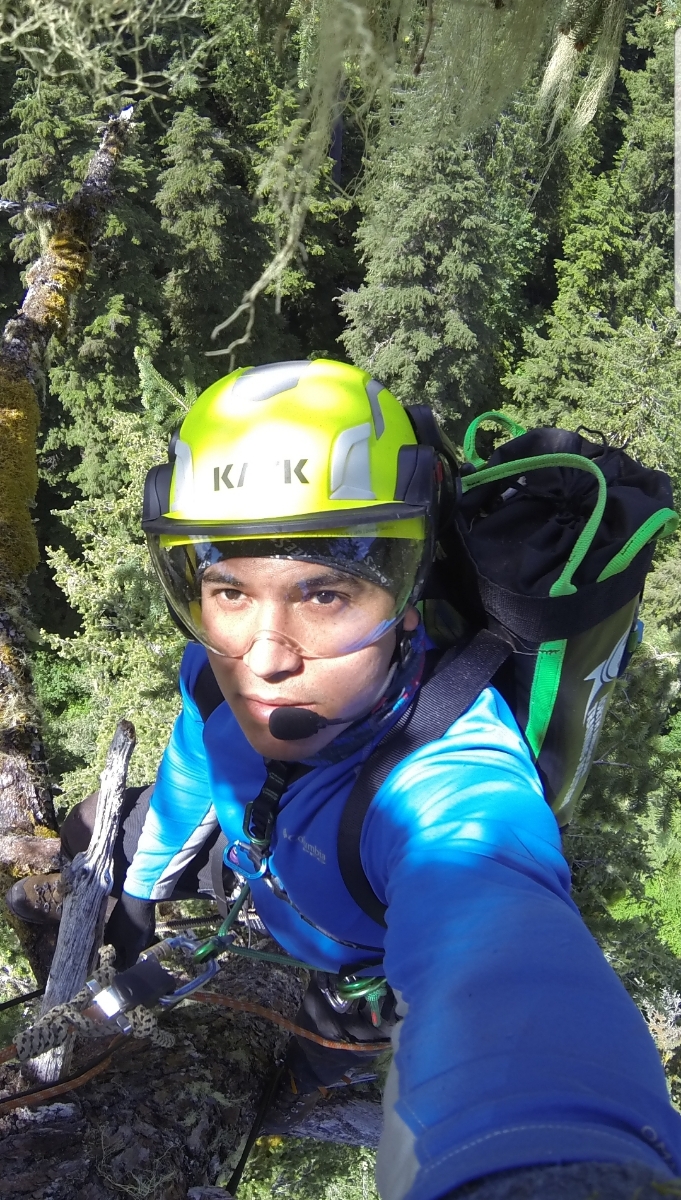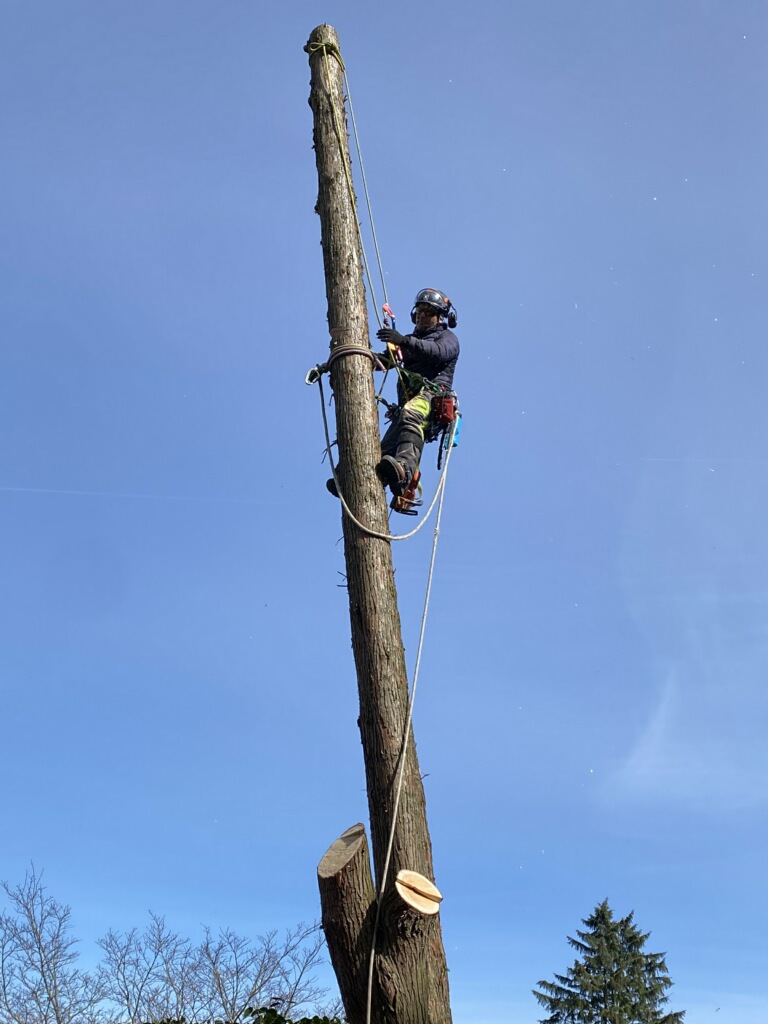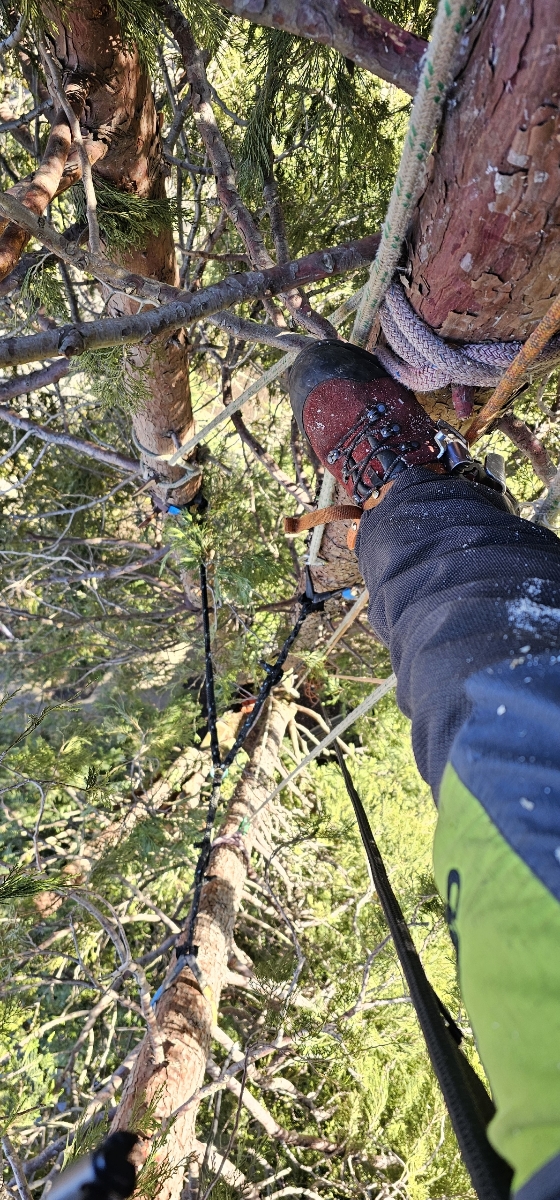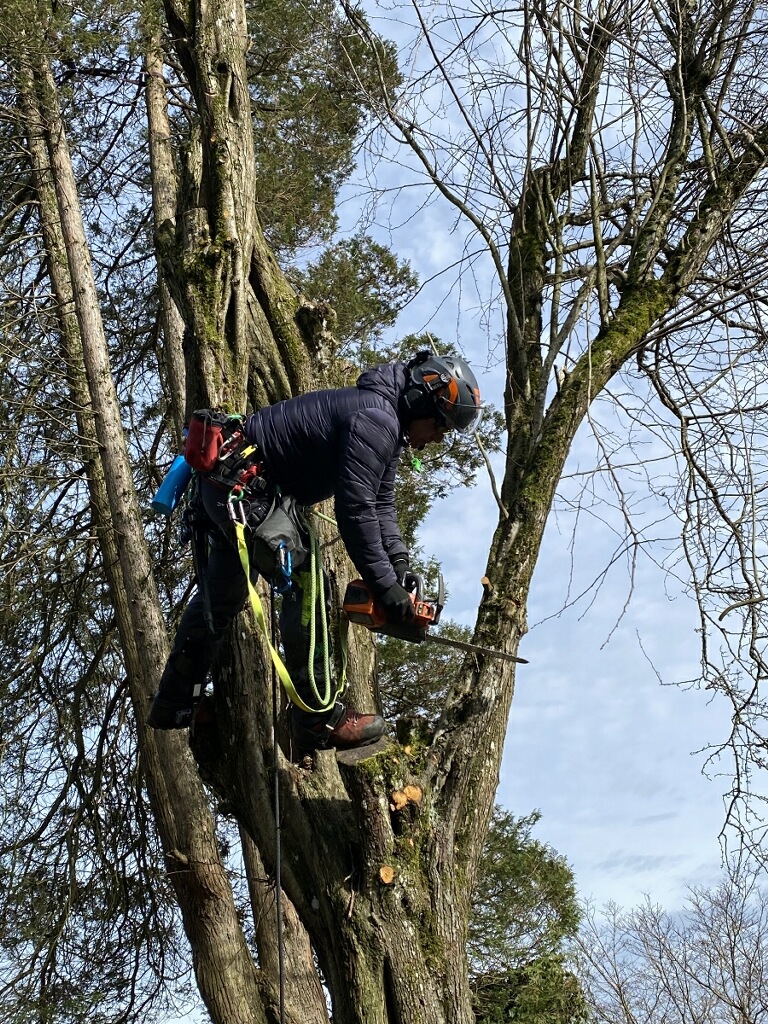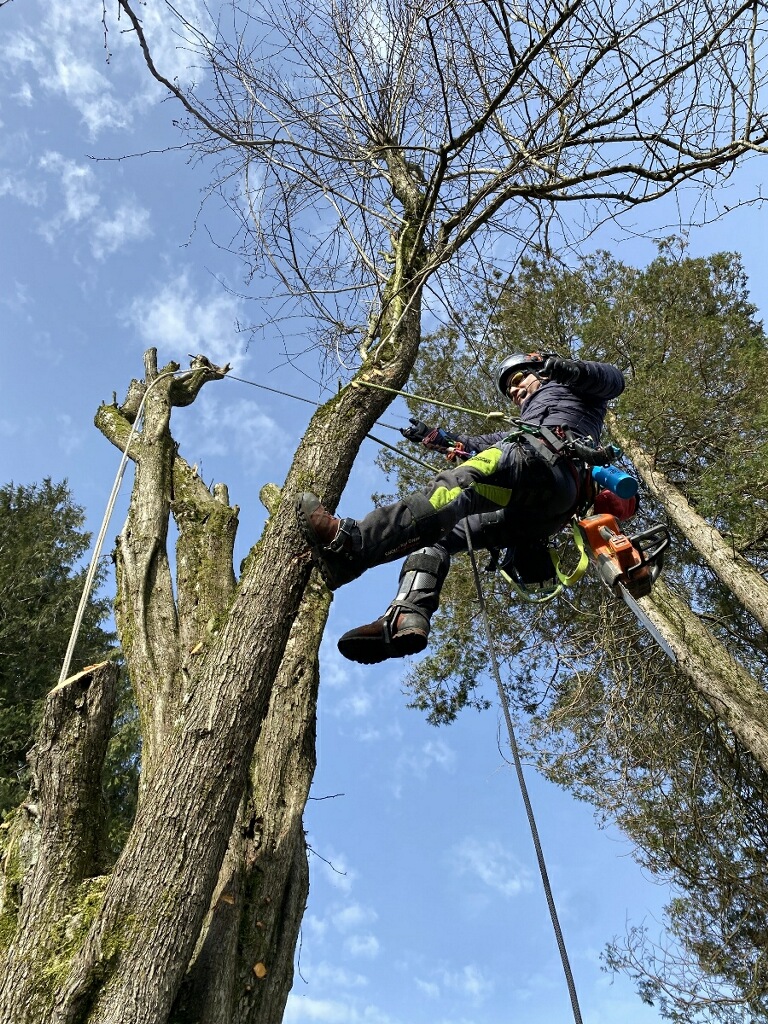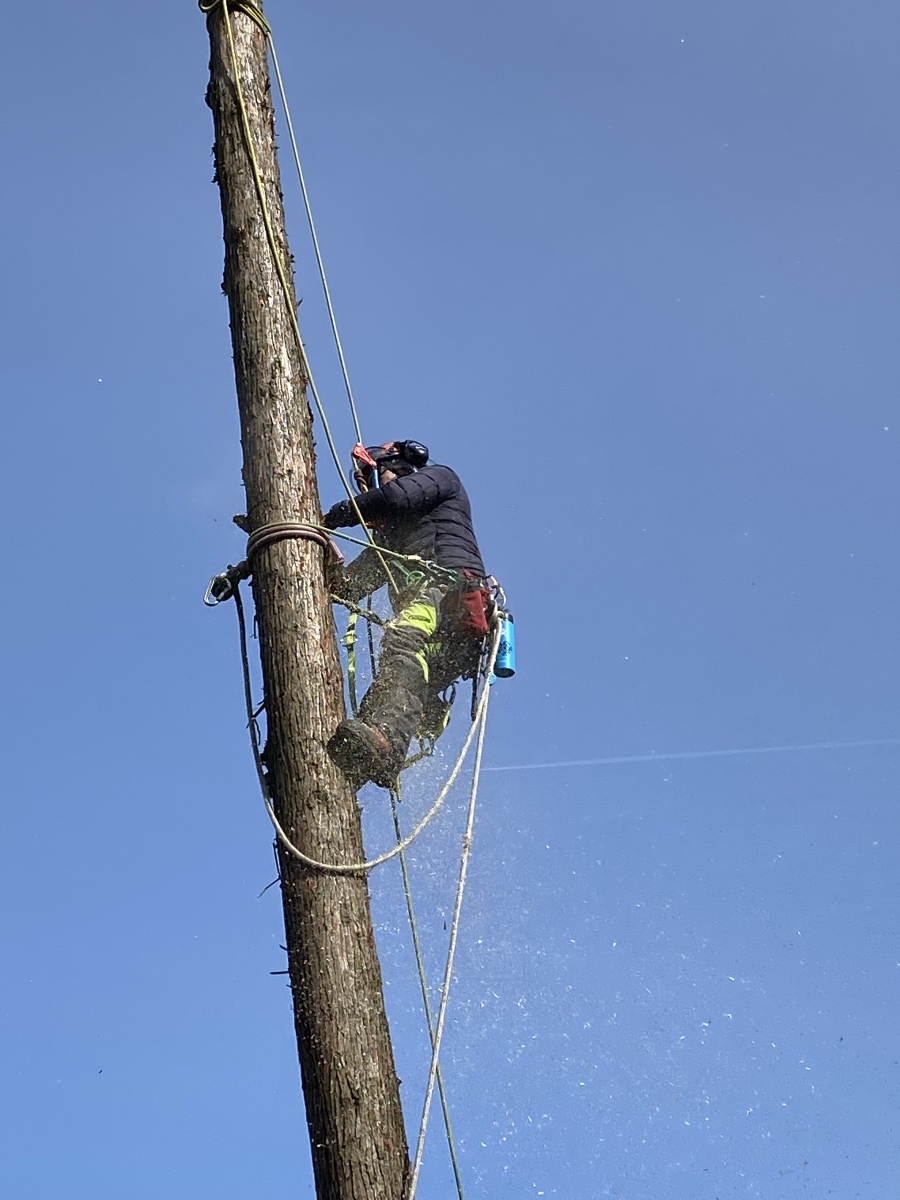Roots Run Deep: An Interview with NATS Trainer Tyler Zuniga
HAIX® loves to highlight heroes. This week, we interviewed Tyler Zuniga, a Safety and Training Specialist for North American Training Solutions (NATS). Tyler has nearly two decades of experience as an arborist and his list of credentials, certifications and qualifications is as long as one of his technical tree climbing ropes! We talked trees, training, how he came to work for NATS and tips for tree care and wildfire mitigation. If you have ever used electricity, live in a wildfire-prone area, or if you’re interested in safe and expert tree care practices, you’re going to want to read this.
HAIX®: Why are you so interested in tree care and safety and why did you become an instructor?
Tyler: I grew up in the tropical forest of Costa Rica, and I spent my early childhood years walking under the tree canopy with my family. They taught me about trees—how to identify them and about safety awareness while walking through the jungle under the tree canopies, some of which are extremely hazardous due to their large falling fruit. When I was a teen, a group of scientists came to our family farm, and I was introduced to tree phenology studies. That is when I became truly fascinated about studying trees and their habitat. After finishing college, I looked for a career in forestry and that is how I ended up taking an apprenticeship in urban forestry in Lake Oswego, Oregon. This was my introduction to the importance of tree care and safety.
As an arborist, I learned that there are many dangers to this job. Data tells us that tree care workers are exposed to high injury rates from numerous hazards while performing tree care operations; that’s why safety is very important to me. I believe that training is crucial for all arborists who perform technical tasks aloft as well as for their ground personnel. Trees can be tricky because they’re living organisms and are exposed to pathogens and the natural environment which often lead to failures. It’s easy to generate thousands of pounds of force while climbing these trees and performing rigging applications all while suspended from them using fall protection PPE and climbing systems, an improper anchor point, and the misuse of rigging systems could cause tree failure. Safety knowledge is crucial to keep all personnel safe while these large forces are applied to the tree.
I became an instructor when I felt like I possessed a high level of field experience and safety knowledge that allowed me to help my team develop safe work practices and efficiency while using tree care tools and heavy forestry equipment like chippers, bucket trucks, and hoisting cranes. In the early 2000’s, there were very few safety trainings in the PNW (Pacific Northwest) to teach us the proper use of forestry lifts and cranes, including the necessary safety communication techniques and hand signals, industry acronyms, the proper use of friction-lowering devices, chainsaw ground cutting and safety policies for chipping operations near tree climbing and rigging operations. Tree care safety requires training and techniques from an arborist with senior levels of fieldwork experience and safety knowledge. My goal as an instructor is to reduce work injuries and support the folks who make sure that reliable power is delivered to your home on a daily basis, rain or shine.
HAIX®: How did you come to work for NATS? What did you do before your time at NATS?
Tyler: After my internship in Lake Oswego, I started my own tree care company that specialized in vegetation management near power lines, using bucket trucks and cranes for tree removals. In early January 2016, my team and I were asked to help at the Butte Fire near San Andres, California. It was a devastating fire; it burned so hot that the tree stumps and roots were burning underground, making the remaining standing trees very unstable for climbing and felling operations. During the wildfire project onboarding process, I met a safety team named NATS (North American Training Solutions). With them was Ed Carpenter, the NATS CEO at that time. In the coming weeks, he spent time with my team, helping us understand that project’s specific tree climbing and felling procedures, as well as local wildfire policies; this information was crucial knowledge for our team to operate safely. My team and I enjoyed having Ed onsite since he was so committed to sharing safety knowledge with us. Over the coming years, I was asked by NATS to support safety on several different wildfires. That’s how my journey to lead instructor began, NATS and I have the same goals—sharing safety knowledge to support tree workers. While helping other tree workers on wildfire projects, Ed had a significant influence on my becoming a NATS lead instructor.
HAIX®: What is your favorite part of your job?
Tyler: My favorite part of being a lead instructor is sharing my work knowledge and years of experience with other workers at their safety trainings. I also enjoy helping others understand our ANSI industry safety guidelines, OSHA safe work practices, and leading mandatory trainings like Electrical Hazard Awareness Training (EHAT) and Aerial Rescue Training, as well as other trainings such as Technical Tree Climbing, Technical Rigging with Ground Operations, and Chainsaw Safety/Cutting Techniques.
HAIX®: How does your experience in tree care help you in wildfire fighting?
Tyler: Tree care experience helped me and my team on wildfire projects with the proper use of forestry tools, how to approach hazardous job sites in a safe manner using years of experience and knowledge to understand dangerous hazards like tension and compression forces that have shifted from normal tree forces to an unstable situation. It also helps with knowing how to perform technical chainsaw cutting techniques aloft versus on the ground- they are very different cutting styles. Those prior years also taught me, personal and team care, evacuation protocols, emergency procedures and readiness, team dynamics, proper communication, and work structure are all things that I have learned with my tree care experience that are very helpful in wildfire settings.
Hazard awareness was also something from my prior experience! After a fire, the hazard is not just a compromised tree—it could be an electrical component on the ground with extreme exposure to electrical shock, actively uprooting trees, or compromised burnt trees with a very high potential for barber-chairing. It could also be an ashpit - tree trunks and roots burned into coals underneath the ground surface, all covered by ash.
HAIX®: What are the top things folks can do to prepare for a wildfire, especially in regard to trees?
Tyler: Fuel reduction and proper debris management around houses and neighborhoods are one step homeowners can take. Planting native drought-resilient vegetation is another possible strategy.
For an arborist team deployed into a wildfire area, here are my top five things I considered very important before a deployment:
- Organize all project credentials required for the deployment.
- Plan your deployment with a team with forestry work experience, safety structure, and healthy work habits.
- Take professional tools that are in good condition.
- Understand personal and team limitations so safety culture can grow as the team learns the work environment- this turns a high-risk exposure into a manageable safety production task.
- Physical wellness and mental flexibility to network, support the need, and be ready to learn/share.
HAIX®: What happens to trees and forests AFTER a wildland fire? How do you help with reforestation?
Tyler: Hazardous trees near roads or powerlines are removed, especially those trees with the potential to strike electrical infrastructure. In National Forests, the remaining trees are left alone to decay and feed the forest. Restoration projects: there are so many- I personally have worked on river restoration & salmon habitat projects, which are crucial for healthy rivers that support fish and wildlife.
HAIX®: What was it like working the fire events listed on your NATS resume? Do you have any interesting stories to share?
Tyler: Well, it’s hard to turn something so devastating and heart breaking to the communities and wildlife affected by fires into a positive story, but I will do my best here.
When a fire occurs, FEMA or Local state agencies declare a State of emergency, people generally want to help… it’s amazing how far tree workers will travel across state lines, leaving their family and normal lifestyle to go into a hostile environment to help on wildfire projects. The interesting part is that we may not know each other, but we network together as a community to understand the area complications and the level of hazard exposure in the environment we will be working in. We do this at muster meetings that take place on mornings before going into the field or performing any work. Together, we express safety concerns which helps to create a community with different skills to offer and soon enough we all thrive as a workforce, removing one hazard at a time. It is also a place where great long-term friendships and work relationships can develop. I have made many friends on these deployments.
HAIX®: Is there anything else you would like to share? Any other messages for our audience that you feel is important?
Tyler: First, I want to thank HAIX® for their tremendous efforts to support us tree workers with comfortable safety boots. It has allowed me to focus on other potential hazards while keeping my feet well-supported and isolated from electrical hazards such as step potential.
Quick tip: PPE has to meet the project requirements criteria, but it should also fit you comfortably so you can focus on the task. If your PPE is causing you discomfort or pain, you are more likely to remove it from your body, and in that case, you will be breaking safety regulations and exposing yourself, so it’s very important to know your PPE. Here are five things I recommend that you know about your personal protective equipment (PPE):
- When & What Kind of PPE is Needed
- Proper Inspection of your PPE
- Maintenance & Care of that PPE
- PPE Limitations
- Proper Retirement Criteria of PPE
I don’t know about you, but I’m glad Tyler has chosen this path. His passion for tree care and safety is evident! Thanks for your time, Tyler!
For more about Tyler, and North American Training Solutions, visit https://northamericantrainingsolutions.com/meet-our-team/tyler-zuniga/
